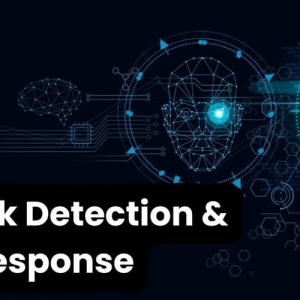Data exfiltration — the unauthorized transfer of sensitive data from a network — is a growing concern in today's cybersecurity landscape. Whether conducted by external threat actors or malicious insiders, these attacks can have devastating consequences for organizations, including regulatory penalties, reputational damage, and operational disruption. Traditional security tools often struggle to detect stealthy data exfiltration, especially when attackers use encrypted channels, covert protocols, or legitimate credentials.
Enter Extended Detection and Response (XDR) — an integrated security approach that aggregates and correlates telemetry across endpoints, networks, servers, and cloud environments. XDR not only improves visibility across the attack surface but also provides forensic capabilities to trace the full lifecycle of data exfiltration attempts. This blog explores how XDR can be effectively leveraged to trace and respond to these threats in real time.
What Is Data Exfiltration?
Data exfiltration is the act of transferring data from within an organization to an external destination without authorization. It can occur through:
-
Malware that collects and sends data back to command-and-control (C2) servers.
-
Insider threats copying files to external drives or cloud storage.
-
Exploitation of application or API vulnerabilities.
-
Use of encrypted channels to bypass inspection tools.
These incidents often go unnoticed because the data transfer may appear legitimate unless contextually analyzed.
The Role of XDR in Exfiltration Detection and Investigation
Extended Detection and Response (XDR) consolidates signals from various security layers, enabling holistic visibility and faster incident response. For data exfiltration, XDR helps in several ways:
1. Centralized Telemetry Correlation
XDR aggregates data from:
-
Email security gateways
-
Cloud security posture management (CSPM)
-
Identity and access management (IAM) platforms
By unifying logs and alerts, XDR offers a timeline view of the attack — from the initial compromise to lateral movement and eventual exfiltration.
2. Behavioral Analytics and Anomaly Detection
XDR uses machine learning to build baselines of normal user and system behavior. When an employee starts transferring gigabytes of sensitive files to an unusual destination at odd hours, XDR flags the anomaly. For example:
-
Unusual upload spikes to external IPs
-
Use of file compression tools or encryption utilities
-
Uncommon USB device usage
These behaviors are correlated to detect exfiltration attempts in real-time.
3. Tracing the Kill Chain Backwards
When an alert about data exfiltration is generated, XDR allows incident responders to “pivot” across data sources:
-
What process initiated the connection?
-
Which user account was used?
-
What files were accessed and how?
-
Was malware involved?
By walking back through the attack chain, analysts can identify patient-zero, the lateral movement path, and all affected assets.
4. Integrated Deception and Decoy Technologies
Advanced XDR platforms integrate cyber deception tactics such as:
-
Decoy file shares or honeytokens
-
Fake credentials or databases
If attackers interact with these deceptive assets, it immediately alerts defenders while revealing their intent, tools, and movement. Deception can serve as an early-warning system that feeds XDR with high-confidence signals about attempted exfiltration.
Common Exfiltration Techniques Detected by XDR
XDR helps identify and analyze the following exfiltration vectors:
| Technique | Description | XDR Detection Capability |
|---|---|---|
| DNS Tunneling | Exfiltrating data via DNS queries | Detected via NDR behavior analytics |
| Cloud Storage Abuse | Uploads to Google Drive, Dropbox, etc. | Cloud telemetry & anomaly detection |
| Encrypted Protocols | Using HTTPS, FTPS, or VPN tunnels | L7 inspection + behavioral outliers |
| Command-and-Control (C2) | Backdoor communication with attacker server | Correlates endpoint & network activity |
| Email Attachments | Sending sensitive files out via email | Integrates with secure email gateways |
| Removable Media | Copying data to USB drives | Detected by EDR and access logs |
Real-World Example: Tracing an Exfiltration Attempt with XDR
Let’s look at a simplified scenario:
-
Initial Compromise: A user clicks a phishing email, triggering malware installation.
-
Lateral Movement: The malware uses valid credentials to access a shared drive.
-
Data Collection: Files are compressed and encrypted.
-
Exfiltration: The malware sends data to an external server via HTTPS.
With XDR:
-
EDR detects the execution of unknown binaries and anomalous file access.
-
NDR spots large outbound HTTPS traffic to a non-whitelisted domain.
-
Email security tools show that the phishing email was the entry point.
-
IAM logs show anomalous login patterns.
XDR pieces together this information into a unified incident timeline, helping the SOC team respond quickly — block connections, isolate hosts, and start threat hunting for similar indicators of compromise (IOCs).
Benefits of Using XDR to Trace Exfiltration
-
Faster Detection & Response: Real-time alerting across layers.
-
Root Cause Analysis: Full kill chain visibility for forensic investigations.
-
Reduced Alert Fatigue: Contextualized and correlated alerts reduce noise.
-
Threat Containment: Automated playbooks isolate compromised systems.
-
Compliance Reporting: Clear documentation of breach scope and response actions.
Best Practices for Organizations
To maximize the effectiveness of XDR in combating data exfiltration:
-
Enable comprehensive telemetry across endpoints, network, and cloud.
-
Use deception elements to gain proactive insight into attacker behavior.
-
Fine-tune anomaly detection to minimize false positives.
-
Create and test automated playbooks for exfiltration scenarios.
-
Regularly hunt for data egress anomalies, even without alerts.
Conclusion
Data exfiltration can be subtle, stealthy, and devastating. Traditional point solutions often fail to connect the dots in time. XDR changes the game by bringing together signals from multiple layers and providing the context needed to trace and stop these threats in their tracks. Combined with deception tactics and behavioral analytics, XDR offers a powerful weapon in defending against modern data theft attempts.
As attackers become more sophisticated, the ability to see across silos and trace their every move is no longer optional — it’s essential. Investing in an XDR platform with deep visibility and intelligent correlation could mean the difference between a close call and a catastrophic breach.


